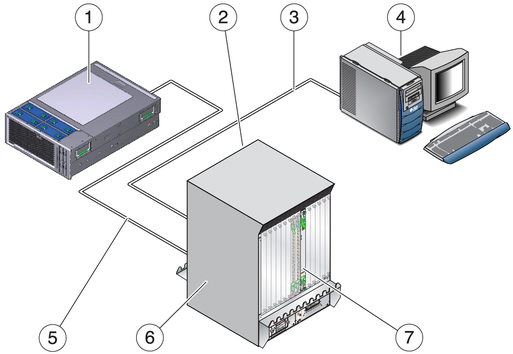| Skip Navigation Links | |
| Exit Print View | |

|
Netra SPARC T3-1BA Blade Server User’s Guide |
Documentation, Support, and Training
Evaluating Product Compatibility
Form-Factor Physical Characteristics
Warranty and Technical Support
System Requirements and Options
Installing Optional Components
Preparing to Install the Blade Server
Power and Thermal Distribution
Required Cooling and Blade Impedance Curve
Local Network IP Addresses and Host Names
Connect the External I/O Cables
Connect Cables to a System Console Running the Oracle Solaris OS
Connect Cables to a System Console Not Running Oracle Solaris OS
Insert and Latch the Blade Server
Software and Firmware Upgrades
Software and Firmware Upgrades
Firmware and Blade Server Management
Creating a Boot Disk Server and Adding Clients
Create a Boot Server for Diskless Clients
Compact Flash Formatting for the Oracle Solaris OS
Multiplex Configuration of Zones 2 and 3
Advanced Rear Transition Module Connectors (Zone 3)
Locate Base MAC Address on Blade Server
Configuring and Using Serial Over LAN
Shut Down OS and Deactivate the Blade Server
Power Off and Remove the Blade Server
Blade servers can be installed into an ATCA shelf (chassis), as shown in the following figure. The blade servers can be deployed in various electrical configurations to suit user requirements. For example, the blade server can be configured to boot from a network as a diskless client with either a front panel or an ARTM network connection.
Figure 3 Blade Server and Components in Shelf Enclosure

Figure Legend
1 Remote server
2 ARTM (installed from rear)
3 Serial connector 10 meters or less
4 Terminal console
5 Ethernet connection
6 ATCA shelf
7 Blade server
Possible boot and console configurations are described in the following table. The ARTM provides one 10/100/1000BASE-T per second Ethernet RJ-45 port from the host to the rear of the system. Optionally, this port can be used to accomplish a network boot as a diskless client. The other configurations require IHV hardware.
Table 1 I/O Configurations
|
You can configure your blade server with the following optional components: